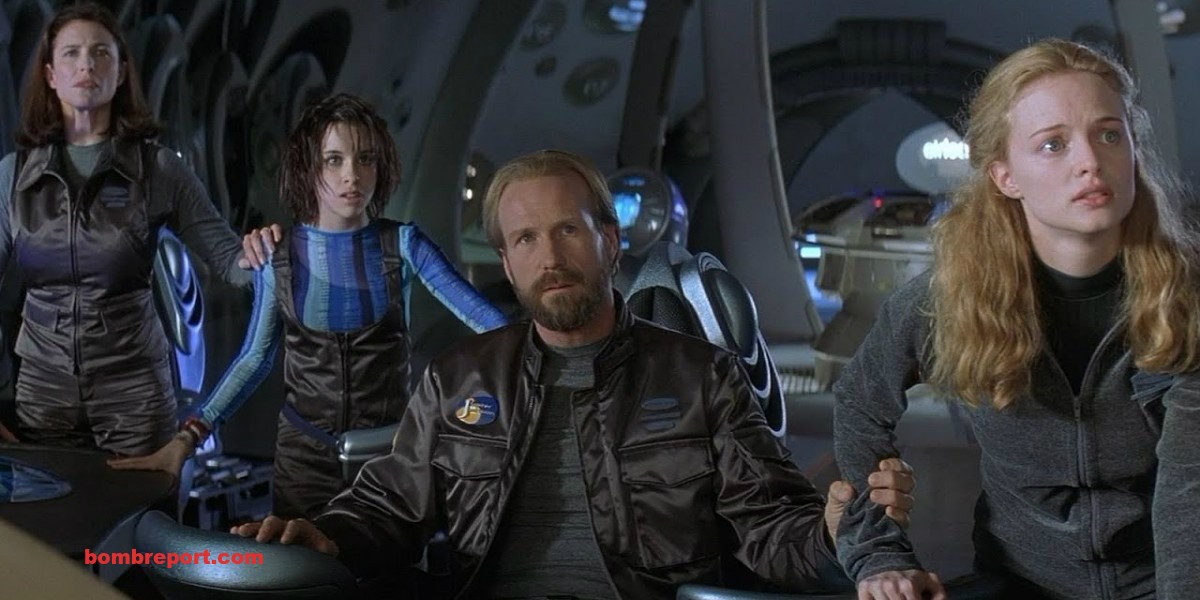Lost In Space
 Rate Movie[Total: 29 Average: 2.8]
Rate Movie[Total: 29 Average: 2.8]
- Directed By: Stephen Hopkins
- Written By: Akiva Goldsman
- Release Date: April 3, 1998
- Domestic Distributor: New Line
- Cast: William Hurt, Mimi Rogers, Heather Graham, Gary Oldman

Box Office Info:
| Budget: $90 million | Financed by: New Line |
|---|---|
| Domestic Gross: $69,117,629 | Overseas Gross: $67,041,794 |

On June 17, 1994 the production company Prelude Pictures acquired the rights to the Lost In Space property from Ib Melchior and on August 5, 1994 Prelude took the project over to New Line for development and financing. Ib Melchior’s contract stipulated that he would receive $75,000 if the movie was produced, plus a special advisor fee of $1,500 per week for a minimum of ten weeks during pre-production. He would also be entitled to 2% of Prelude’s gross receipts — and Prelude would only receive gross receipts from New Line if the movie turned a profit. There were no profits on Lost In Space. New Line paid Melchior $90,000 and then he unsuccessfully sued the mini-major, claiming he was entitled to his portion of the film’s revenue. The court sided with New Line in 2003, five years after Lost In Space flopped and the court summary stated that the movie had never broken even.
Back to pre-production. The project began to come together quickly in late 1996 and was in front of the cameras in March 1997. The budget for Lost In Space was $90 million and it was greenlit as New Line’s most expensive movie in the company’s history. The film was expected to launch a franchise based off the built in awareness of the property’s name from the 1965 TV series — appealing to both baby boomers nostalgic for the show and younger auds who would interested from the easily packaged premise.
As the movie went into production, New Line also fully exploited the property for merchandising opportunities — landing tens of millions in free exposure from dozens of corporations who also felt a big screen Lost In Space had major blockbuster potential. Trendmasters launched a toy line; both Harper Prism and Scholastic had book tie-ins; Frontier Communications International sold Lost In Space branded phone cards; Altoids branded their cases for mints; and Little Caesars Pizza signed on to shill out $20 million in Lost In Space tie-ins, only to pull out in October ’97, which prompted a $100M lawsuit from New Line. Long John Silver’s eventually took over the Little Caesars deal.
Lost In Space was dated for April 3, 1998 and in addition to the massive amount of months long cross-promotional exposure, New Line was bullish on their marketing — and also dished out for Super Bowl ads priced at $1.3M per 30 seconds. It bowed against Mercury Rising. Much of the pre-release publicity was also informing audiences that this new Lost In Space shed the campy nature of the show, but despite the huge budget, the vfx were so poor that it did indeed push the movie into unintentional goofy territory. Reviews were negative, with most critics complaining that the picture was a plotless, narrative flatline and visually ugly.
Lost In Space opened with $20,154,919 — and it’s only box office achievement was being the first movie to dethrone Titanic from the #1 spot after 16 weeks in release. It declined a modest 33.5% to $13,395,392 the following frame and then fell 44.4% to $7,451,911 in its third session. The domestic run closed with a franchise ending $69,117,629. New Line would see returned about $38M after theaters take their percentage of the gross, which would almost cover the P&A expenses, but none of the budget.
New Line did mitigate some risk on the pricey picture, by selling some offshore rights to distributors. Lost In Space pulled in a less than blockbuster $67M from its overseas run.

No movie ever “shows” a profit!
Man, the box office was brutal in the 90s after you account for P&A costs. If Netflix was around back then, they could have bought all of these movies and made them themselves.
This is why by the late 90s studios were chasing international box office, and in the 2000s, China/Asian audiences, as they had over 1 billion viewers ready for all the new 3D multiplexes and IMAX cinemas that were springing up.
New Line completely screwed up international release dates too, so much so, in the UK stores were selling import US DVDs of the movie before (which ironically were cheaper to buy than a singe cinema ticket) it was even out in cinemas as it took so long to be released. And that’s people who saw the film legitimately.
By the usual 55/45 domestic split and 40/60 overseas split, New Line saw about $64.8 million returned to them, which left them with at least a $65 million loss once P&A expenses are accounted for.
Lost in Space actually had somewhat decent staying power when comparing similar films. But it still wasn’t enough to make a profit obviously.